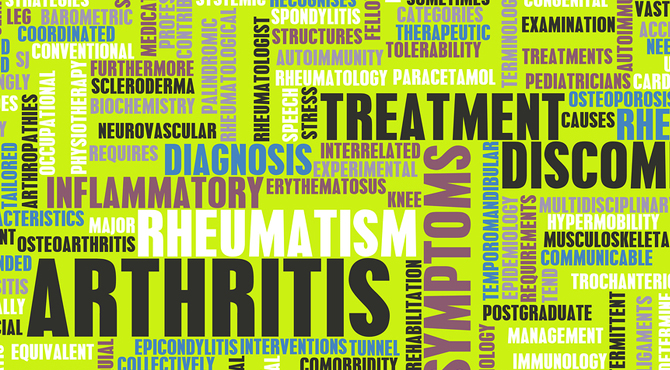I treat patients suffering from arthritis on a daily basis. As May is Arthritis Awareness Month, I wanted to spend some time addressing the types of arthritis, its causes, and the kinds of treatments available to minimize its effects. Most people have heard of arthritis, but many don’t know much about it other than that it causes pain in the joints and is associated with the elderly. There are many forms of arthritis, but the two most common are Osteoarthritis (OA) and Rheumatoid Arthritis (RA). Furthermore, the disease is not exclusively limited to the elderly. In fact many younger adults are also experiencing the onset of arthritis today, and even children may develop Juvenile Arthritis.
The disease is a complex one that can interfere with leading a normal life and make even the most basic day to day tasks painful and difficult. Fortunately, there are many effective holistic treatment methods that can lessen the pain and loss of mobility associated with arthritis, and although I am not suggesting that patients abscond from taking prescription medication entirely, I have seen alternative approaches make a big difference for arthritis sufferers.
Before outlining treatment options, I first wanted to give a general overview of Osteoarthritis and Rheumatoid Arthritis, why they occur, and their effects. The most common form or arthritis is Osteoarthritis, which is a chronic (meaning long-term) condition that occurs when the cartilage in the joints breaks down. Because cartilage serves to pad the ends of the bones and prevent them from scraping against each other, as the cartilage begins breaking down, sufferers experience pain and lack of mobility. A variety of factors may contribute to whether a person develops OA, some beyond his or her control, such as age or genetics. However, other factors are a result of lifestyle choices and thereby within the sufferer’s ability to control. For example, those who are obese are at greater risk of developing OA because excess weight puts added pressure on the joints. Overuse also contributes to OA; for example, a runner or athlete who puts repetitive stress on the knees and joints may be at greater risk for developing OA.
Rheumatoid Arthritis is another common form of arthritis, which affects approximately 1.3 million people nationwide. It is actually an autoimmune disease, meaning that for some reason the immune system actually attacks the body. This disease is also chronic, but the patient may experience periods of remission alongside active flare-ups. In the case of RA, the membrane lining the joints is attacked, contributing to pain, loss of mobility, inflammation, a buildup of fluid in various parts of the body, and even fatigue and fever. Women are more likely to develop RA than men, and although genetics play a major role in that they can increase susceptibility to viruses and bacteria that trigger RA, environmental factors can also contribute. For example, smoking cigarettes has been shown to increase the risk of developing RA.
Fortunately, there are multiple treatment options available to make living with Osteoarthritis and Rheumatoid Arthritis more manageable. Most doctors recommend a regimen of occupational and physical therapy, proper nutrition, exercise, and medication (drugs to prevent pain and inflammation are typically used, and in the case of RA, DMARDs and Immunosuppressants are also proscribed). Because DASHA is built on a platform of a holistic approach to wellness, we provide alternative treatment options which patients may choose to use independently of or in conjunction with medications proscribed by their medical doctor.
We frequently treat patients suffering from Osteoarthritis at DASHA; because we treat many marathon runners, athletes, and triathletes, we see numerous examples of arthritis at least partially resulting from overuse. Sometimes chiropractic adjustments prove helpful for patients with OA, but because RA frequently leads to a weakening of the bones and ligaments, I typically wouldn’t proscribe adjustments for these patients. However, we have multiple other treatments and therapies available to lessen patients’ pain and prevent a loss of mobility and range of motion. Treatment options for pain management include electric stimulation, moist heat, Cold Laser Therapy, and ultrasound.
Massage therapy, physical therapy, stretching, and manual therapy (taking the neck and back through their full ranges of motion) are also used to help our patients maintain an optimal amount of mobility. Although arthritis is an extremely prevalent condition that is unfortunately a chronic one, the good news is that there are many great treatment modalities available to help manage the disease in a holistic way and make leading a happy, healthy, and normal life possible.
DASHA wellness & spa is a luxury lifestyle brand and New York City-based wellness center created to offer a truly holistic approach to wellness. To learn more, visit dashawellness.com.






